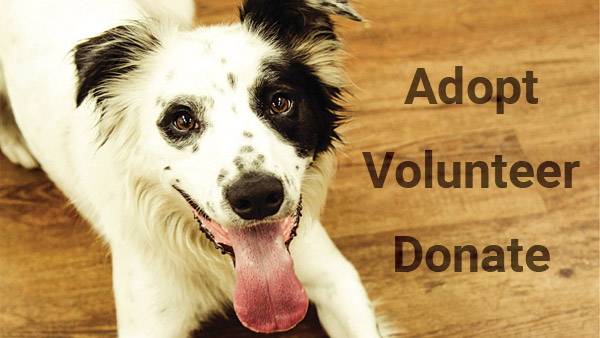Seperation Anxiety
- This topic has 1 reply, 1 voice, and was last updated 15 years ago by
Mackenzie’s Admin.
-
AuthorPosts
-
October 4, 2006 at 10:38 pm #205
Mackenzie’s Admin
MemberMy dog becomes very upset when I leave home and tears things up. What should I do? Very social animals, dogs prefer to be with others. When left alone, some companion canines become very distressed, suffering from an attachment disorder known as separation anxiety. Dogs who suffer from separation anxiety just can’t learn to cope with being alone, and they express their anxiety by barking, howling, whining, chewing, soiling, and/or attempting to escape. Usually, you can diagnose separation anxiety if the dog becomes anxious and worried or severely depressed as you prepare to leave, and acts as though you’ve been gone for years when you return!
Separation anxiety is often triggered by a traumatic event or disruption in the dog’s lifestyle, such as a change in the family’s work schedule, an adjustment in the family composition, the death of another pet, a move to a new home, or being boarded or hospitalized for a period of time. Purebreds are more likely to suffer from separation anxiety than mixed breeds, and adult dogs who have been re-homed are especially at risk.
STEP-BY-STEP METHOD TO EASE SEPARATION ANXIETY[
The most effective treatment for a dog with separation anxiety is to accustom the dog to very short periods of time alone. While at the same time, you must pair the experience of being alone with something wonderful, such as his favorite treats. For this exercise, you’ll need some hollow toys into which you will stuff tasty treats; these are readily available at pet supply stores. Just before you walk out the door, scatter a selection of toys around the room. Step out the door and wait for no more than 30 seconds to one minute. Come back in. If your dog is still working on the toys, excellent! Remove the toys so the dog learns that he only has access to them when he’s alone. Repeat several times each day, gradually increasing the time you are outside the home. Periodically revert back to shorter times so that the dog is forever hopeful that you’ll be right back. Take things slowly! You should initially increase the time you’re away by only seconds, and then work up to minutes. When you hit 30 minutes, begin to take jumps of five minutes. When you achieve two hours, take jumps of 15 minutes. When you can be out of the home for four hours and your dog stays relaxed, you can probably be gone for a full eight-hour day. Continue to leave food toys that will occupy the dog for at least 20-30 minutes.
You will greatly increase the chances of successful treatment if you make arrangements for your dog to be with someone whenever you have to be away from home for longer than your dog is prepared to handle. For instance, take the dog to doggy daycare, hire a sitter to stay with him, or take him with you.
If your dog isn’t interested in the food toys, just ignore him and retrieve the toys. Wait 20 minutes or so and try again. If your dog won’t eat from the toys when he’s alone—even after you’ve skipped feeding him one meal, and you’re confident he’s hungry and likes the food you’ve left him—then your dog has a more serious case of separation anxiety and you will need to seek the help of a Certified Applied Animal Behaviorist, Veterinary Behaviorist, or Certified Professional Dog Trainer. Your dog may need drug therapy in addition to behavior modification to help him.
SHOULD YOU LEAVE YOUR DOG IN A CRATE?
Placing your dog in a crate when you go out may prevent destructive behavior or stop him from escaping. However, he will still feel anxious and may howl, bark, and soil in the crate. Some dogs will even panic and injure themselves trying to escape from the crate. If your dog is accustomed to a crate and treats it as a "safe haven," then it would probably help to use a crate. Place the dog in the crate and go through the steps as outlined above.
WHAT TO DO:
– Whenever you are getting ready to leave the house, make your routine less predictive and obvious. You can ignore the dog, practice obedience behaviors, such as “Sit” and “Down Stay,” or distract the dog with a chew bone or toy.– Keep your departures and arrivals low key so the dog doesn’t associate comings and goings with arousal and stress.
– Practice short absences and gradually build up the time you are gone.
– Use reward-based training, practice out-of-sight “Sit” and “Down Stays” around the house so you can be in one room and the dog in another.
– When not training the dog and, until you have the problem resolved, arrange for someone to be with the dog at all times when you are away.
– Teach the dog mannerly ways to gain your attention, such as “Sit,” “Down,” and “Bring a toy.” If your dog has learned to gain your attention when you’re home by barking, pawing, and mouthing, then it should come as no surprise that your dog has temper tantrums when you’re away.
– Give your dog plenty of physical exercise before leaving your dog for lengthy periods of time, especially if you leave first thing in the morning.
WHAT NOT TO DO:
– Do not confuse your dog’s anxiety with revenge, spite, or dominance. Your dog is genuinely upset and distressed and needs your help. Punishment will only exacerbate the dog’s anxiety.– Do not continue to confine your dog to a crate or room if the dog is injuring himself trying to escape.
– Do not attempt to reduce your dog’s attachment to you by constantly ignoring him. Some experts believe that “breaking the bond” will fix separation anxiety. This can actually make the dog become even more desperate for your affections. If done repeatedly, this approach can even be inhumane—because canines so need social contact.
April 11, 2009 at 6:39 pm #552Mackenzie’s Admin
MemberI have adopted a dog that has severe seperation anxiety and found that these practices do work well. However Sam’s case is extremely severe and it has taken 6 months to have him adjust. He still can become nervous but he isn’t destroying his crate or eating our walls anymore.
-
AuthorPosts
- You must be logged in to reply to this topic.
















































